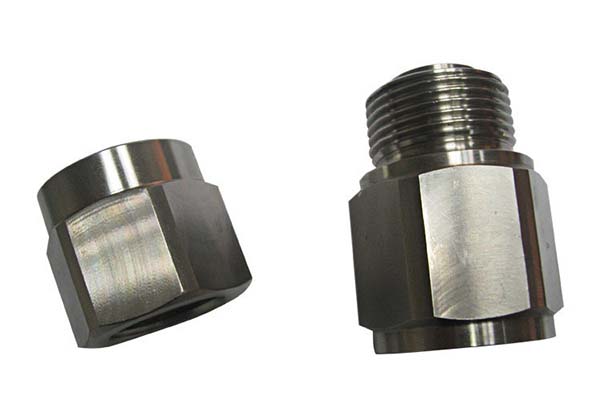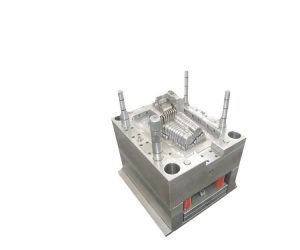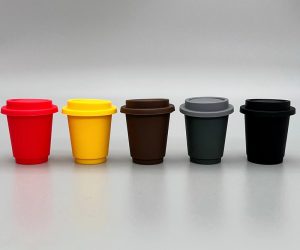Introduction
In the dynamic landscape of modern manufacturing, CNC machining has emerged as a cornerstone technology, revolutionizing the way products are designed and produced. Standing for Computer Numerical Control, CNC machining harnesses the power of computer - controlled systems to execute precise and complex manufacturing operations. This technology has transcended traditional manufacturing boundaries, enabling the creation of intricate components with a level of accuracy and efficiency that was once unimaginable.
The wide - ranging applications of CNC machining have spurred the development of various types of machining processes, each tailored to specific manufacturing needs. From the removal of material through milling and turning to the creation of holes via drilling, and the finishing operations using grinding, these processes form the building blocks of CNC machining. Additionally, specialized techniques like Electrical Discharge Machining (EDM) and Waterjet Cutting have further expanded the possibilities of what can be achieved with CNC technology.
Milling
Definition and Working Principle
CNC milling is one of the most prevalent CNC machining processes. It involves the utilization of a rotating cutting tool, such as an end - mill or a ball - nose mill, to remove material from a stationary workpiece. The milling machine is equipped with multiple axes (commonly three - axis, but can be five - axis or more in advanced setups), which allows for highly flexible and complex movements of the tool relative to the workpiece.
For Yigu Technology instance, in a three - axis milling machine, the tool can move along the X, Y, and Z axes. This enables operations like face milling, where the flat surface of a workpiece is machined, and contour milling, which is used to create complex 2D or 3D shapes. The CNC system controls the speed of the spindle (which rotates the cutting tool), the feed rate (the speed at which the tool moves relative to the workpiece), and the depth of cut (how much material is removed in each pass). The following diagram shows the basic working principle of CNC milling:
Turning
Definition and Working Principle
CNC turning is a fundamental CNC machining process that involves the rotation of a cylindrical workpiece while a stationary cutting tool removes material to shape the part. In a CNC turning setup, the workpiece is clamped onto a spindle, which rotates at a high speed. The cutting tool, mounted on a tool post or turret, is then fed into the rotating workpiece. The movement of the cutting tool is precisely controlled by the CNC system along the X and Z axes (in a two - axis lathe), allowing for the creation of various cylindrical shapes, such as straight cylinders, tapers, and threads.
For example, when Yigu Technology machining a shaft, the raw material in the form of a cylindrical bar is first clamped onto the spindle. The cutting tool, which can be a single - point tool like a turning tool or a threading tool, is moved towards the rotating workpiece. As the tool makes contact with the workpiece, it shears off the excess material, gradually shaping the shaft to the desired dimensions. The following diagram illustrates the basic working principle of CNC turning:
Drilling
Definition and Working Principle
CNC drilling is a specialized subtractive manufacturing process with a primary focus on creating precise holes in a workpiece. It is a fundamental operation in many manufacturing applications, ranging from simple assembly tasks to the production of complex components. The process typically involves a single - axis movement, although in more advanced setups, multi - axis capabilities can be utilized for more complex hole - making operations.
The working principle of Yigu Technology CNC drilling is centered around the use of a rotating cutting tool, known as a drill bit. The drill bit is mounted on a spindle, which is driven by a motor to rotate at high speeds. When the drill bit comes into contact with the workpiece, the cutting edges of the bit shear off the material, gradually creating a hole. The depth of the hole is controlled by the vertical movement of the drill bit, which is precisely regulated by the CNC system. For example, in a typical CNC drilling operation, the operator first loads the design data, which includes the coordinates of the holes, their diameters, and depths, into the CNC controller. The controller then commands the spindle to rotate the drill bit at a specific speed and feeds the bit into the workpiece at a controlled rate. The following diagram shows the basic working principle of CNC drilling:
Grinding
Definition and Working Principle
Yigu Technology CNC grinding is a precision machining process that uses abrasive wheels to remove material from a workpiece. The abrasive wheel, which is composed of countless tiny abrasive grains bonded together, rotates at a high speed. As the wheel comes into contact with the workpiece, the abrasive grains act like small cutting tools, shearing off small amounts of material from the workpiece's surface. This process is highly precise and is often used for finishing operations to achieve extremely tight tolerances and smooth surface finishes.
For example, in the production of precision engine components, the surfaces need to be extremely smooth to reduce friction and ensure optimal performance. The CNC grinding process starts with the workpiece being securely mounted on a worktable or fixture. The abrasive wheel is then brought into contact with the workpiece, and the CNC system precisely controls the movement of the wheel and the workpiece. The wheel can move in multiple axes, allowing for the grinding of complex shapes and surfaces. The following diagram shows the basic working principle of CNC grinding:
Other Specialized Processes
Electrical Discharge Machining (EDM)
Electrical Discharge Machining, commonly known as EDM, is a non - traditional machining process that uses electrical discharges to erode material from a workpiece. This process is based on the principle of electro - erosion. In EDM, a tool electrode and the workpiece are placed in a dielectric fluid, such as kerosene or deionized water. A high - voltage pulse is applied between the tool electrode and the workpiece. When the voltage is high enough, the dielectric fluid between the two electrodes is ionized, creating a conductive path known as a plasma channel. This channel allows a high - current electrical discharge to occur, generating intense heat (temperatures can reach up to 10,000 °C) in a very small area on the workpiece surface. The heat causes the local material on the workpiece to melt and vaporize, and the resulting debris is then flushed away by the dielectric fluid.
EDM is particularly useful for creating complex shapes and intricate details that are difficult or impossible to achieve with traditional machining methods. It is often employed in the manufacturing of molds for the plastics industry. For example, in the production of injection molds for small, intricate plastic parts like electronic components housings, EDM can create cavities with extremely fine details, such as small holes, thin walls, and complex internal geometries. In the aerospace industry, EDM is used to machine parts made of high - strength alloys, such as turbine blades. These blades often have complex airfoil shapes and require precise cooling holes, which EDM can produce with high accuracy.
A case study of a mold - making company showed that when they needed to produce a mold for a smartphone housing with a very complex inner structure, traditional milling was unable to achieve the required precision and detail. By using EDM, they were able to create the mold with the exact specifications. The mold had intricate features such as thin ribs for strengthening the housing and small holes for components to be inserted. The production time for the mold was reduced by 30% compared to attempting to use multiple traditional machining processes, and the quality of the final plastic parts produced from the mold was significantly improved, with a reduction in defects by 20%.
Waterjet Cutting
Waterjet cutting is a machining process that uses a high - pressure stream of water, often mixed with abrasive particles, to cut through materials. The process starts with water being pressurized to extremely high levels, typically ranging from 200 to 600 MPa (29,000 to 87,000 psi). This high - pressure water is then forced through a small nozzle, usually made of sapphire or diamond, creating a high - velocity jet of water. When abrasive waterjet cutting is used, abrasive grains such as garnet are added to the water stream. The abrasive particles in the waterjet act like tiny cutting tools, abrading the material as the jet impinges on it.
Waterjet cutting is suitable for a wide range of materials, including metals (such as aluminum, steel, and titanium), composites (like carbon - fiber - reinforced polymers), ceramics, and even soft materials like rubber and foam. In the automotive industry, waterjet cutting is used to cut sheet metal parts for car bodies. For example, it can cut complex - shaped parts from aluminum sheets with high precision, reducing the need for secondary finishing operations. In the construction industry, waterjet cutting is used to cut stone and tiles. It can create intricate patterns and shapes in marble or granite for decorative purposes.
Compared to traditional cutting methods like sawing or laser cutting, waterjet cutting offers several advantages. One major advantage is that it is a non - thermal process. Laser cutting, for instance, can cause heat - affected zones (HAZ) in the material, which may change the material's properties. In waterjet cutting, since there is no heat input, the material's properties remain unchanged. A study comparing laser - cut and waterjet - cut aluminum sheets showed that the laser - cut sheets had a HAZ of up to 1 mm in width, with changes in hardness and microstructure, while the waterjet - cut sheets had no such HAZ. Waterjet cutting also produces very little mechanical stress on the workpiece, making it suitable for cutting brittle materials like glass and ceramics without causing cracking. Additionally, waterjet cutting can achieve a relatively high cutting accuracy, with tolerances as low as ±0.1 mm in many cases, and it can create smooth cut surfaces with a surface roughness of around 1.6 - 3.2 micrometers (Ra).
Comparison Table of CNC Machining Processes
To further illustrate the differences and characteristics of various CNC machining processes, the following Yigu Technology table provides a concise comparison in terms of precision, material suitability, cost, and efficiency:
| Machining Process | Precision | Material Suitability | Cost (Relative) | Efficiency |
| Milling | High (±0.001 inches) | Metals, plastics, composites | Medium - High for complex setups | High for multi - operation in one setup |
| Turning | High (±0.0005 inches) | Metals, plastics (cylindrical parts) | Medium - Low for high - volume cylindrical parts | High for high - volume cylindrical parts |
| Drilling | High (±0.002 inches for hole size) | Wide range of materials | Low - Medium | High for high - volume hole - making |
| Grinding | Very High (±0.0001 inches) | Hard metals, ceramics, glass | High | Low (slow process) |
| EDM | High (able to create intricate details) | Hard metals, alloys | High (due to specialized equipment) | Low (slow process) |
| Waterjet Cutting | Moderate (±0.1 mm) | Wide range of materials (non - thermal process) | Medium - High (equipment cost) | Medium - High for thick materials |
This Yigu Technology table serves as a quick reference guide for manufacturers and engineers when making decisions about which CNC machining process to use for a particular project. However, it's important to note that these are generalizations, and the actual performance of each process can vary depending on factors such as the specific equipment used, the skill of the operator, and the complexity of the workpiece.
Conclusion
In Yigu Technology conclusion, CNC machining processes have revolutionized the manufacturing landscape with their precision, efficiency, and versatility. We have explored several key types of CNC machining processes, each with its unique characteristics, advantages, and limitations.
Milling stands out for its high precision and versatility, capable of creating complex shapes and performing multiple operations in a single setup. However, it requires skilled programming and can face challenges when dealing with certain materials. Turning is the go - to process for cylindrical parts, offering high precision, speed, and excellent surface finishes, but is limited in terms of the shapes it can produce. Drilling is specialized in creating precise holes with high - speed capabilities and works well with a wide range of materials, yet its applications are mainly restricted to hole - making. Grinding is essential for achieving extremely tight tolerances and smooth surface finishes, although it is a relatively slow process and requires careful heat management.
Specialized processes like Yigu Technology EDM and Waterjet Cutting have further expanded the capabilities of CNC machining. EDM is ideal for creating intricate details in hard materials, while Waterjet Cutting is suitable for a broad range of materials and offers a non - thermal cutting option.
When choosing a CNC machining process, several factors need to be considered. The project requirements, such as part geometry, tolerances, and surface finish, play a crucial role. Material properties, including hardness, toughness, and thermal conductivity, also influence the choice. Additionally, budget and timeline constraints can sway the decision towards more cost - effective and faster processes for high - volume production or more specialized processes for low - volume, high - precision applications.


